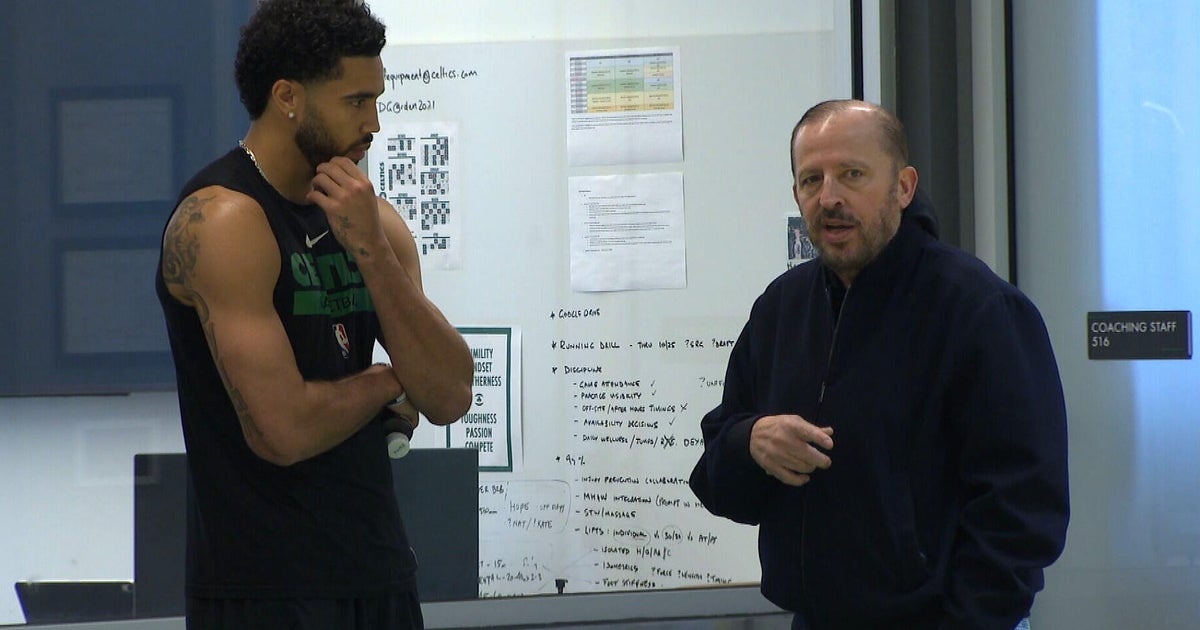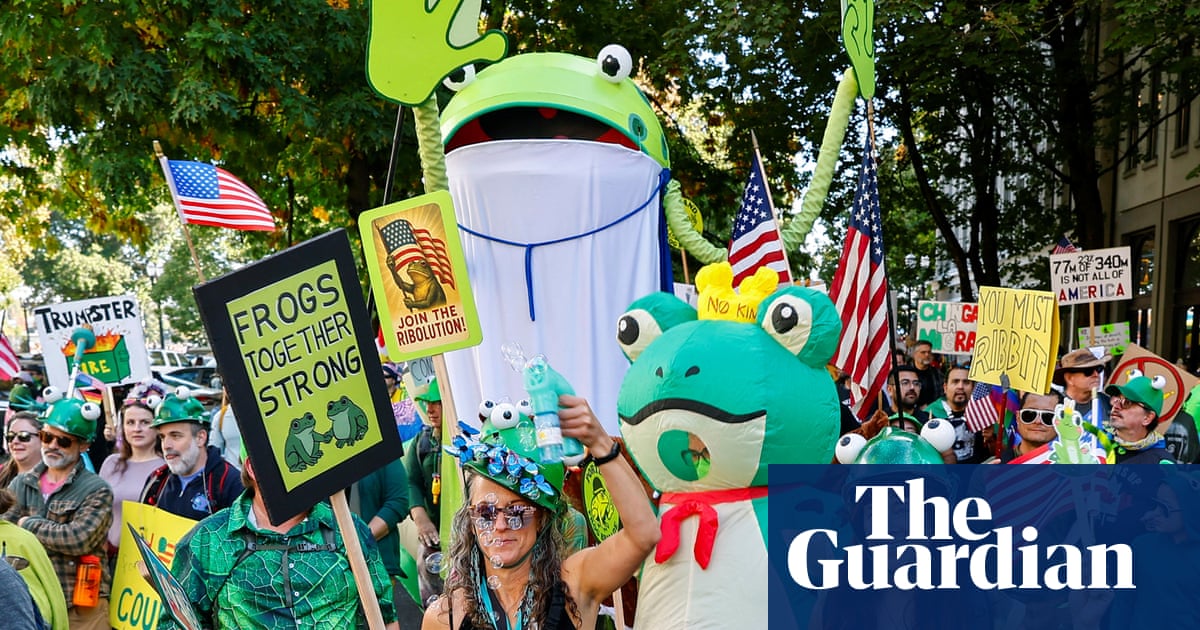Sign up for Celtics updates🏀
Get breaking news and analysis delivered to your inbox during basketball season.

Jeffries Point resident Andrew Pike knows that if he is not in a resident parking spot by 5:30 p.m. on any given day, the next few hours will be spent circling the neighborhood looking for a place to leave his car.
Add on street sweeping, when spots are eliminated for hours at a time, and people “literally cannot find parking,” said Pike, who serves as the treasurer for the Jeffries Point Neighborhood Association.
“You’re kind of screwed,” he told the Herald Friday afternoon. “You’re at least parking three blocks away from your house. You’re circling around trying to find something.”
It is an all too familiar feeling for drivers who need their cars in the city and cannot ditch them for public transportation options like the MBTA, which these days is often unreliable or experiencing service disruptions.
Finding a spot can feel like a chore, and even bring about frustration and rage. Annoying parking situations in the city are nothing new and neither are discussions about reforming or even somehow fixing resident parking in Boston.
Then-City Councilor Michelle Wu offered some reforms in 2019 to the resident parking permit process that would have put in place fees for parking permits, allowed for visitor parking permits, and required a number of parking-related reports from the city’s parking clerk.
City Councilors are returning to the issue in July after East Boston City Councilor Gabriela Coletta called for a hearing to discuss the digitization and tracking of parking regulations at the Boston Transportation Department.
“While BTD is currently experiencing understaffing, establishing a tracking system that allows the department to see gaps in service can ensure that residents who live in high-density areas can safely and reliably find parking near their homes,” Coletta wrote in a hearing order.
The city already tracks how many active parking permits have been issued in each of the neighborhoods — 125,561 stickers are in use, according to data last updated on Thursday.
But even with that limited understanding of how many people need places to leave their cars, resident street spots in downtown neighborhoods like Beacon Hill, the North End, or Back Bay fill up quickly after the workday ends.
And private parking solutions are expensive. The Boston Common garage charges $400 for a monthly space and it only goes up from there. A parking garage on Charles Street asks for upwards of $600 for a parking spot. Some even list spots for rent on real estate websites like Zillow.
Beacon Hill Civic Association Chair Meghan Awe said parking in the historic neighborhood is equally as tough as the Back Bay and the rest of downtown. But summers tend to offer better parking prospects than September to May when kids are in school, she said.
“There’s what feels like fewer spots than the people who would like to park in them. Lots of residents here wind up parking in various garages just because of the amount of time circling looking for things,” Awe said. “But I think it’s one of those things that sort of just become a part of city life.”
Nancy Lane/Boston Herald A resident parking permit sign on Beacon Hill in Boston on Thursday, June 29, 2023. Beacon Hill Civic Association Chair Meghan Awe said parking woes are just one part of living in a packed historic neighborhood. (Nancy Lane/Boston Herald)
Even in larger neighborhoods like Allston-Brighton or Fenway-Kenmore, parking can be tough for residents without a driveway or off-street options.
Nearly 27,800 active resident parking permits are registered to the neighborhoods, where more than 109,000 people live, according to the city parking permit data and the U.S. Census Bureau.
And there is tension in Allston-Brighton between “good” public policy that calls for more pedestrian spaces or bike lanes and resident parking needs, said Anthony D’Isidoro, the president of the neighborhood’s civic association.
“How do you achieve that balance where you’re pursuing good public policy in terms of trying to get people out of cars, at the same time recognizing that, in a lot of cases, there are legitimate needs that need to be met,” D’Isidoro told the Herald. “How do you strike that balance?”
A Wu spokesperson said each neighborhood has different needs “when it comes to finding the right balance of multi-modal transportation.”
“As bike lanes and other updates are made in Boston’s neighborhoods, the Streets Cabinet works with local residents and business owners to address specific neighborhood concerns to best reflect how people use our streets,” the spokesperson said in a statement. “The City of Boston is working proactively to best manage our curb space to ensure the most efficient use of parking, such as creating loading zones or changing the length of parking spots to ensure more people who need to park can do so.”
Curb-side drama has flared in neighborhoods like West Roxbury, Back Bay, Beacon Hill, and the North End, where conversations around bike lanes and the proper use of space have often spilled into the open.
A bike lane proposal on Berkeley and Beacon Streets to connect the South End to the Back Bay drew opposition from local groups. But alternative transit advocates argue most major bus or bike projects in Boston draw opposition regardless of their merits from groups who think it will increase congestion.
And solutions like building more parking spaces might actually make the problem worse, said LivableStreets Executive Director Stacy Thompson.
“We need to charge for parking, and we need to limit the number of cars households can have. That’s the way to do it and that doesn’t make people happy. But that’s the most effective way,” Thompson told the Herald.
The requirements to get a resident parking permit are straightforward.
A car needs to be registered and insured at the address where a resident wants to obtain a parking sticker. All overdue parking tickets must be paid off before applying or renewing. The permits are renewed on a two-year cycle but the city automatically renewed permits during the pandemic as their expiration date came up.
Matt Stone/Boston Herald
A resident parking permit sticker is pasted to the left side of this car in the Fenway-Kenmore neighborhood on Friday, June 30, 2023. (Matt Stone/Boston Herald)
There is no cap on the number of parking permits the city can distribute, according to the Wu administration, which also said officials do not keep track of the exact number of resident parking spaces available in each neighborhood.
Wu called for an analysis of the number of parking spaces available in resident parking zones to help bring about reforms in 2019, “including a comparison of how many spaces are available relative to how many permits are issued,” according to the text of a hearing order from that year.
The proposal went nowhere. But it did start a conversation around resident parking in Boston.
Limiting the number of parking permits in certain high-density neighborhoods might be one answer, Thompson said.
“What … would be more effective is a better curbside management strategy for the city where high-density neighborhoods start to have escalating fees [for permits] and caps,” she said. “Neighborhoods that have businesses have more metered parking and timed parking.”
The lack of data on available parking spaces and caps on the number of permits in each neighborhood is not the main issue in East Boston, said Pike, the Jeffries Point Neighborhood Association treasurer.
For Pike, the lack of parking enforcement creates the biggest headaches in East Boston.
“If there’s no enforcement, people are just going to do whatever the hell they want. And that’s what’s happening right now,” he said.


Boston Celtics
The Celtics showed flashes of what they can be at their best this season, but the 76ers got a historic rookie performance from VJ Edgecombe and a huge game from Tyrese Maxey to take the season opener.
Here are the takeaways.
Rookie wing VJ Edgecombe looked more than worth the Sixers’ robust tanking efforts last season in his regular-season debut. Edgecombe broke the NBA record for most points in the first quarter by a rookie with 14, surpassing LeBron James’ record of 12, and he broke the Sixers’ record for points in a rookie debut of 30 set by Allen Iverson, pouring in 34 on 13-for-26 shooting, including several earth-shaking dunks.
“For a rookie to come in, first game and put up (those numbers), it was impressive,” Derrick White said. “I don’t know if I’ve ever seen somebody have that in his debut, but he had a really good game.”
Point guard Tyrese Maxey, meanwhile, looked every bit up to the task of being the Sixers’ primary superstar this season, pushing the Sixers out to a halftime lead and pulling them back from the brink when Boston threatened to pull away in the fourth. Maxey finished with a massive 40-point outing, running rampant through a Celtics’ defense that struggled to get back and defend him whenever they missed shots.
The Sixers are far from a perfect roster, but tanking last season appears to have worked wonders for them, and as The Process Pt. 1 appears to be coming to a close (more on that in a minute), they appear very well set up to begin The Process Pt. 2.
After letting a double-digit lead slip away, the Celtics looked like they were done, but Edgecombe missed two late free throws that gifted them a final chance.
With eight seconds left, Derrick White struggled to inbound the ball before finally dishing to Payton Pritchard. Pritchard drove into the paint and had his shot blocked out of bounds with just over a second remaining.
On their last, last chance, the Celtics once again passed to Pritchard, who created a little space but missed the potential game-winner.
According to Pritchard, the play was designed for Jaylen Brown.
“They kind of shadowed it,” Pritchard said. “I got it, attacked, probably just made the wrong read. Anfernee (Simons and Sam (Hauser) were open on the back side, so that’s just a pass I’ve got to make.”
For his part, Mazzulla said the goal was to get the ball to the Celtics’ ball-handlers.
“We got the ball into the paint, got a decent look,” Mazzulla said. “It’s all you can do is get it to those guys, and they gave us a chance to win.”
At the risk of sounding overly reductive, the Celtics really need to get wins this season when the opportunities presents themselves, and Wednesday’s game was a prime example.
On a night when the player best suited to hurt them looked like a shell of himself, and when they built a double-digit second-half lead against a shaky roster propped up by two superhuman performances, the Celtics couldn’t claim their first win of the season.
That puts them in a precarious position over their first seven games. Their next contest is on the road against the Knicks, who are widely considered a genuine championship contender this season. That’s the start of a three-games-in-four-night stretch, during which their most beatable opponent (the Pelicans) is the opponent they face last. They then take on the Cavaliers (another championship contender), this 76ers team again, and the Rockets (yet another championship contender, who looked like a heavyweight in their showdown against the Thunder on Tuesday).
When the dust settles, the Celtics could be in a tough position in the standings, and while it’s still clearly very early in the season, this is not last year’s roster – digging out of an early hole will be much more difficult.
Brown and White scored 25 points apiece in their debut as the new Celtics stars. Brown dished out four assists early and shot 9-for-18 from the floor, and he played the kind of patient floor game the Celtics need from him in the absence of Jayson Tatum.
Prior to the game, Brown was questionable with a hamstring injury suffered during preseason.
“It was fine. I thought it held up well,” Brown said. “Definitely got to do some recovery. Within the first two weeks coming back from a strain, you’ve got to make sure that you get your recovery in because that’s when the risk is at its highest.
So I’ve just got to make sure I’m focusing on my body, getting my rest, doing my recovery, and getting ready for the next game.”
White, meanwhile, went ice-cold with the rest of his teammates from three in the second quarter – at one point, the Celtics missed nine straight – but he came alive in the third, and he worked his way to the line seven times.
The Celtics reportedly spent the summer checking on what they could get for Simons on the trade market, and that option is still likely on the table – this is, after all, a team very much in flux – but the early returns are promising.
Simons was as advertised offensively. He hit multiple 3-pointers that barely disturbed the net on their way through, he attacked the basket in late-shot-clock situations and created offense out of nothing, and at one point in the fourth quarter, he exploded to the rim and elevated so quickly off the ground that Tyrese Maxey could only jump out of his way futilely as Simons thundered home a two-handed slam.
Defensively, Simons was clearly trying to make a good impression. He was consistently down in a stance guarding ball-handlers, he ripped Maxey in transition at one point as the Sixers’ speedy guard flew to the rim, and – perhaps most importantly – he battled his way over and around screens without getting stuck, which has been one of his biggest problems as a defender. He still is unlikely to be a positive on the defensive end, but he was undeniably a positive overall.
Simons finished with 13 points on 5-for-10 shooting. On a team that lost its primary bucket-getter last season, he could make up some of the difference.
The Celtics got the full range of the Neemias Queta experience in the fourth quarter – the very good, and the very bad.
Queta had a good game overall – 17 points on 7-for-8 shooting and eight rebounds, including two big offensive ones. In the fourth quarter, he scored on four out of five consecutive possessions including three in a row. The Celtics needed a big performance from a big man, and they got one.
“He’s got it in him to be good for us, and he did some really good things,” Joe Mazzulla said. “The standard’s high for him.”
On the other hand, Queta committed a bad offensive foul setting a moving screen at a critical moment with 2:45 remaining and the Celtics nursing a four-point lead, and he fouled out a minute later sending Maxey to the free-throw line. Down the stretch, the Celtics needed Queta, who probably wouldn’t have short-armed the crucial put-back attempt that Xavier Tillman missed.
The Celtics have a lot of flawed-but-useful big men who can each do a little bit of something, but not everything. Queta frequently shows flashes of brilliance followed by moments that will leave Celtics fans pulling at their hair.
The first indicator that the 76ers’ big man might not be entirely himself was that he didn’t jump the opening tip, leaving the job to 76ers starting forward Dominick Barlow, who also had the odd distinction of being an Opening Night starter on a two-way contract.
The second indicator that Embiid wasn’t himself was the first Celtics’ possession, on which Neemias Queta set a screen for Derrick White, and Embiid stayed so far back in the lane, it was a little confusing who he was actually supposed to guard. Eventually, White spotted the amount of space he would have any time Queta set a screen, and the Celtics started going directly at Embiid whenever possible.
On the other end, Embiid hoisted a few half-hearted jumpers and attempted one half-hearted post move against Xavier Tillman before bailing halfway through, and Tillman poked the ball away. When Embiid sat down halfway through the quarter, the Sixers looked more like a coherent basketball team.
Things went from bad to worse the rest of the way. At one point, Embiid tried to post up Sam Hauser and failed to do any damage. His presence in the game coincided with the best offensive moments by far for the Celtics, and he sat late with just four points on 1-for-9 shooting.
Embiid’s size and injury history always meant that his aging process was unlikely to be graceful, but it was still jarring to see him moving so poorly this early in the season. The Sixers have plenty of optimism on their roster, but the Joel Embiid era of The Process did not look like it was in a particularly good place on Opening Night.
The Celtics now hit the road on a somewhat nonsensical road trip: They will travel to Madison Square Garden to take on the Knicks on Friday before flying to Detroit for a matchup against the rising Pistons on Sunday. When that game wraps up, they’ll travel to New Orleans to face the Pelicans on Monday.
Get breaking news and analysis delivered to your inbox during basketball season.

Boston Zoning Commission Chair Michael Nichols, who heads a downtown advocacy group, said he plans to recuse himself from Wednesday’s vote on a contentious zoning plan that would clear the way for more skyscrapers downtown.
Nichols, president of the Downtown Boston Alliance, said that although he was cleared by the state Ethics Commission to take part in the vote, he ultimately opted not to weigh in on the zoning changes proposed in PLAN: Downtown in his official capacity as chair of the Zoning Commission.
“I was able to get a state ethics opinion that held that I do not actually have any conflicts tomorrow that run afoul of state law, but I nonetheless don’t want it to be a distraction — so I’m opting not to participate,” Nichols told the Herald Tuesday.
Nichols said he sought the ethics opinion based on a potential conflict of interest he may have in voting on the downtown zoning plan due to his advocacy group’s work to “analyze the plan for so long.”
He is the chair and president of the Downtown Boston Alliance, which represents commercial property owners in the city’s core.
Nichols said he is also planning to turn the gavel over to Commission Vice Chair Jill Hatton for the duration of the meeting that pertains to the downtown zoning plan. Ahead of the vote, a public hearing will be held.
The Downtown Boston Alliance submitted a letter in support of the plan — and its proposed creation of new skyline districts that would allow for 500-700 foot towers in parts of the historic downtown — to the Zoning Commission last Friday. It was sent by DBA Chief of Staff Kelsey Pramik.
“The plan’s passage today is critical for completing the neighborhood’s needed transformation such that it can align with a ‘new normal’ that requires a broader mix of uses, a modernized and more predictable zoning code, and a housing-first agenda to welcome a new generation of residents,” the DBA letter states.
The Alliance sent a similar letter of support to the Boston Planning and Development Agency Board last month, ahead of the board’s 4-1 vote in favor of the zoning plan.
If approved by the Zoning Commission, the Wu administration’s downtown plan would go into effect.
The plan would clear the way for new buildings to tower up to 700 feet over the historic downtown.
It has been a source of contention for other stakeholders, particularly the Downtown Boston Neighborhood Association, which has described the proposed changes as “destructive,” in that they would alter the character of the city’s core and turn it into Manhattan.
Critics have also flagged potential violations to the state’s shadow law, which was enacted in 1990 and restricts the creation of new shadows on the Boston Common and Public Garden at certain times of the day.
The Association supports additional towering in the Financial District east of Washington Street, where such heights have traditionally been allowed. It opposes new skyscrapers in the historic and increasingly residential Ladder Blocks and Park Plaza neighborhoods to the west of Washington Street and adjacent to the Boston Common.
Tony Ursillo, a downtown resident and member of the Association, said Tuesday that “there are glaring deficiencies in the current proposal’s attempt to achieve key goals” of the plan.
“By giving special treatment allowing 500-foot luxury towers to a few cherry-picked sites in the blocks next to Boston Common, the city will produce hardly any affordable housing, will disrupt a historic neighborhood, and will squeeze out opportunities for small businesses to get created and thrive,” Ursillo told the Herald.
He urged the Zoning Commission to allow time to consider potential changes, such as eliminating special exceptions and keeping lower height limits intact around the Boston Common.

The Celtics got some tips Monday at practice from an unlikely source in Tom Thibodeau, who helped eliminate them from the playoffs last season before he was fired as head coach of the New York Knicks.
Thibodeau led the Knicks to an appearance in the Eastern Conference Finals last season, but was fired after New York was swept in four games by the Indiana Pacers.
On Monday, he was at Celtics practice as a guest of head coach Joe Mazzulla.
“He’s obviously been one of the best coaches around for a long time. Worked here. Won a championship here. Just having him around makes me better, makes our organization better, so there’s a lot of respect for him,” Mazzulla said.
Thibodeau was an assistant coach in Boston for three seasons, starting with the team’s championship run in 2007-2008.
Last year, Thibodeau’s Knicks surprised many in basketball when they prevented the Celtics from earning a second straight title by eliminating Boston in the Eastern Conference Semifinals.
Celtics star Jaylen Brown told reporters that the time the team spent with Thibodeau at practice was valuable.
“We lost last year. It stung losing to the Knicks,” Brown said. “So to have Thibs here at our practice and explaining some of the things that he saw to help them beat us only helps me get better, only helps us get better. So I value that. Shoutout to Thibs for being here today.”
The Celtics open their season at home Wednesday against the Philadelphia 76ers. Boston then travels to take on Thibodeau’s former team at Madison Square Garden as the Celtics and Knicks play Friday night.


Israel continues deadly Gaza truce breaches as US seeks to strengthen deal


AI girlfriend apps leak millions of private chats


Trump news at a glance: president can send national guard to Portland, for now


Unionized baristas want Olympics to drop Starbucks as its ‘official coffee partner’


Trump admin on pace to shatter deportation record by end of first year: ‘Just the beginning’


Peanut allergies in children drop following advice to feed the allergen to babies, study finds


Video: Federal Agents Detain Man During New York City Raid


Books about race and gender to be returned to school libraries on some military bases